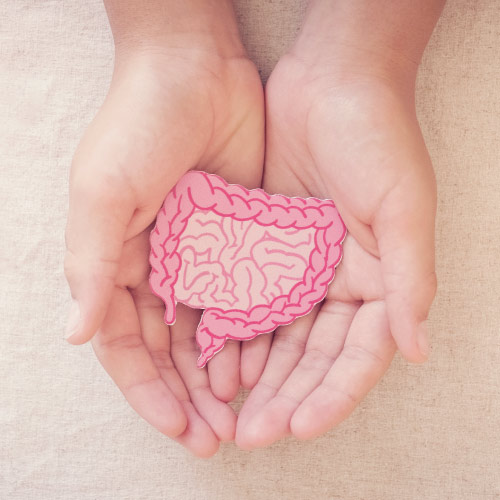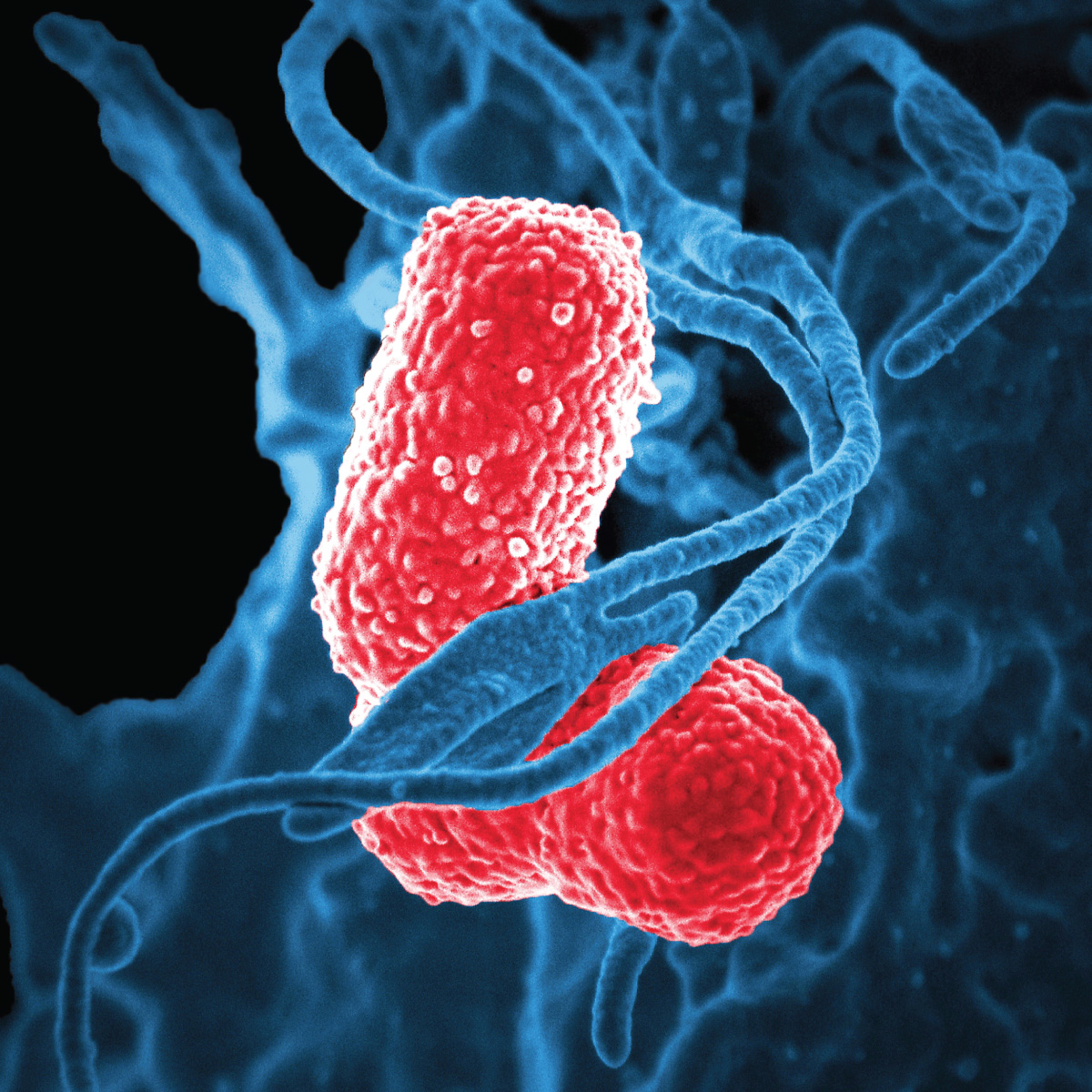Probiotics - health benefits questioned

Probiotics. It seems lately that every parent I see through my BabyCues Clinic is giving their baby or infant probiotics drops, or taking an encapsulated probiotic themselves, and often under the advice of a health professional or organisation. But do they really do any good, and are they even a healthy choice for your children or yourself? Before I delve into answering those somewhat massive questions, let’s first summarise what a probiotic is and what it does.
What are probiotics?
In general, probiotics are seen as beneficial to the host’s body and human health.1 Probiotics are defined as live microorganisms that are believed to provide health benefits when consumed.2,3 A microorganism is considered a probiotic by meeting certain characteristics, such as:
- being of human origin
- non-pathogenic - so incapable of causing disease
- having high resistance to passing through the intestine
- and being beneficial to the immune system.4
For a probiotic to work, it needs to travel completely through the digestive tract and can therefore be measured in faecal microflora. Probiotics can easily be brought at health shops and pharmacies, with an array to choose from. They capture the whole range of ages with probiotics for newborns, probiotics for infants and of course probiotics for adults.
Largely thought of as a health product, it may surprise you to learn that The Food and Drug Administration (FDA) define probiotics as a bio-therapeutic product, which means they are a drug.5 In 2013, FDA guidance on Investigational New Drug (IND) and human research studies included the statement that “if an edible product that might otherwise be a conventional food is intended for a use other than providing taste, aroma, or nutritive value, such as blocking the absorption of carbohydrates in the gut, that product becomes a drug because the primary purpose of consuming it has changed.” 6 This statement is descriptive of probiotics.
Two common probiotics
Lactobacillus Species
Lactobacillus is a ‘friendly’ bacteria that inhabits the small intestine, urinary, and genital systems without causing any disease. This probiotic is publicised as having a positive effect on yeast infections, urinary tract infections, skin disorders, high cholesterol and because it is responsible for making lactase enzyme, it may also positively affect lactose intolerance - a rare disease that sees a newborn failing to gain weight among other symptoms. However, it is touted to be most effective at treating diarrhoea that is caused by a virus or antibiotics.
There are many different species of Lactobacillus. I have listed some for you:

- L. Acidophilus
- L. fermentum
- L. rhamnosus
- L. reuteri
Lactobacillus also ferments carbohydrates in the gut, which produces lactic acid. Lactic acid aids acidic production in the digestive tract while increasing the absorption of minerals like calcium, iron and magnesium.8
It is said that L. acidophilus is likely safe when used appropriately in the general population of children and adults. But it is also said, ‘that it must be used cautiously in this population group and there is not enough evidence about the safety of long-term L. acidophilus use for newborns, infants or children.’ 9 It is also noted that Lactobacillus may cause arthritis, bloating, blockage of a lung artery, diarrhea, disease of the esophagus, heart inflammation, liver infection, skin reactions, stomach cramping, stomach lining inflammation, stomach rumbling, and vaginal burning and discomfort.9
Bifidobacterium Species
Like Lactobacillus, Bifidobacterium is found in fermented foods like yogurt. It lines the walls of the large intestines, attacking bad bacteria and microorganisms while also making lactic acid, B-complex vitamins and vitamin K. Bifidobacterium are said to be the largest group of bacteria in the intestine of infants and, as it is for Lactobacillus, there are many species. Some of which are listed below:
- Bifidobacterium Infantis
- B. brevi
- B. longum
- B. asteroids
Bifidobacteria has been proven to cause an upset stomach, intestine, cause bloating and gas. Not good for our young that tend to react greatly when they feel digestive discomfort and pain. It’s also important to note the Bifidobacteria has not been declared safe to take when pregnant or while breastfeeding.
Safety of probiotics
'The lack of mechanistic understanding of probiotic activity is a major drawback for the prediction of safety of probiotic intervention. The complex gut-associated microbial ecosystem and nutrition-related factors are the most important environmental triggers for the development and modification of chronic degenerative diseases including immune and metabolic pathologies. In fact, the interaction between the gut microbial ecosystem and the host is considered to be a critical factor in overall health or disease. Whether probiotics will exert protective or harmful, immune-stimulating or immune-suppressing effects on a host is dependent on the interplay between the microbial signals, the genetic make-up of the host and environmental triggers.'10 That’s a lot of factors to balance in order to say that specific manufactured probiotic will have this effect on the general population. In fact, this tells us that probiotics cannot work like that at all so should not be marketed as such.

It is therefore, gravely important to ask, with a product that is so precarious, is it really worth giving it to our children or taking it ourselves? Have our baby’s, infants and children become the research guinea pigs for these products while pharmaceutical companies, large conglomerates and health professionals generate income, not only from selling the product but from the possible ongoing ill-effects created by probiotics? When you look at the lack of research on probiotics, one can’t help but think that maybe this is exactly what is happening.
According to a 2002 report jointly released by the World Health Organization (WHO) and the Food and Agriculture Organization of the United Nations (FAO) “probiotics may theoretically be responsible for four types of side effects:11
- Systemic infections – (infections that effect the entire body)
- Deleterious metabolic activities – (harm or damage to metabolic activities)
- Excessive immune stimulation in susceptible individuals – (this can cause a multitude of disorders)
- Gene transfer
Minor gastrointestinal symptoms have also been reported12 and I can attest to this being a symptom caused by probiotics with the babies and mother’s I see in my clinic. In fact, very recently I had a breastfeeding mother that was complaining of chronic abdominal pain and she said, ‘I’m taking all of this healthy stuff but it still doesn’t help.’ On researching the probiotic she was taking, two of the ingredients caused abdominal cramping and discomfort. We took these out and hey presto, no pain. I can’t say this strongly enough to you – research the 'health products' you are taking and not just the brand name but the individual ingredients. It can make all the difference to yours and your child's health!
In the same 2002 report11, WHO and the FAO recommend the "Adoption of the definition of probiotics as ‘Live microorganisms, which when administered in adequate amounts confer a health benefit on the host." Despite stating in the same report, 'It was noted that the currently available tests are not fully adequate to predict the functionality of probiotic microorganisms in the human body. It was also noted that in vitro data available for particular strains are not sufficient for describing them as probiotic. Probiotics for human use will require substantiation of efficacy with human trials." For those of you that don't know, "in vitro data" is data taken from studies where probiotics are tested outside of their natural habitat.
Furthermore, in 2011 the Agency for Healthcare Research and Quality (AHRQ) released a report on the safety of probiotics after reviewing 622 studies of organism Lactobacillus, Bifidobacterium, Saccharomyces, Streptococcus, Enterococcus, and Bacillus. The report was based on research sponsored by the National Institutes of Health and the FDA with the authors concluding, ‘the current literature is not well equipped to answer questions on the safety of probiotics in intervention studies with confidence.’13

The National Institute of Health agreed with these authors in June 2016 saying, ‘Even for healthy people, there are uncertainties about the safety of probiotics. Because many research studies on probiotics haven’t looked closely at safety, there isn’t enough information right now to answer some safety questions. Information on the long-term safety of probiotics is limited, and safety may differ from one type of probiotic to another.’14
‘It should be noted that just as no two probiotic strains can be expected to have exactly the same clinical effect, each probiotic strain, including those that have not yet been developed, would be anticipated to have a different safety profile. Perhaps more importantly, the safety of a commercially available probiotic product depends not only on the probiotic organism but on the other constituents of the product, be it a food or medicinal formulation.’12
Probiotics for colic
The claim that probiotics is effective for the symptoms of colic is also to be debated. One particular probiotic brand that is taking the market by storm boasts such effects while having an array of questionable advertising on their website and product. Without naming names, they claim that ‘L. reuteri is clinically shown to be an effective solution for colic, unlike simethicone’ and it is ‘clinically shown to reduce excessive crying by over 50% in as little as one week in colicky breastfed babies.’ They link these claims to three research papers. On taking a further look at these papers, this is what we find…

The first study was made up of 46 breastfed infants with colic, diagnosed according to modified Wessel’s out-dated criteria of ‘three hours of crying for three days a week, for three weeks from baby who otherwise looks to be thriving.’ The newborns were aged less than five months, with 25 of them receiving the L. reuteri (probiotic) and 21 the placebo.15 So, already a swayed number because of the uneven number. The result showed that 50% reduction of crying occurred with the 25 newborns that were given the probiotic. On the surface that sounds like an okay result, but with the number of recipients some might say it was anecdotal at best. Also, one must take into account the ages of the children that had 50% less crying. Not at any point does the study detail this in the paper and it is therefore quite possible that these 25 children were actually older than 3 months, so at an age where symptoms of so called colic (or what I call Digestive Overload) generally would naturally decrease.
The study concluded that ‘L. reuteri DSM 17 938 at a dose of 10(8) colony-forming units per day in early breastfed infants improved symptoms of infantile colic and was well tolerated and safe.’ Interesting isn’t that they can claim it as safe when, according to many other papers, this has not been proven.
The other two studies that this brand links too within their advertising are reviews of the study above completed at different date. So overall, one might say, it is quite a small research body to be able to make such claims. I also find it ‘comical’ in a tongue and cheek kind of way that the ‘Supplement Facts’ label of this brand details the ‘% Daily Value’ as ‘not established.’
Continuing on the research of probiotics for colic, a study by an assistant professor in paediatrics at the Indiana University School of Medicine monitored 167 babies, aged no more than three months old for four weeks. Some were breastfed, others formula and interestingly enough 85 were given a regular dose of probiotic for the month while 82 received the placebo – another uneven number of recipients. After monitoring a variety of behaviours during that month the authors concluded that, ‘Lactobacillus Reuteri did not reduce crying or fussing in infants with colic, nor was it effective in improving sleep, maternal mental health, family or infant functioning or quality of life. Probiotics therefore cannot be routinely recommended for all infants of colic.’16

A review of literature in 2013 also concluded that ‘the evidence supporting treatment of infant colic or crying in formula-fed infants remains unresolved.’17
Other Ingredients
Many probiotics have other ingredients that accompany the probiotic and I’ve decided to outline a few of the side effects of these ingredients for you below.
Inulin
‘Inulin is an ingredient found in one of the popular brands of probiotics in New Zealand. It is a carbohydrate fiber that occurs naturally in many foods like bananas, wheat, onions and garlic. Found in high concentrations in chicory root, Inulin can be extracted for industrial use. Unlike more familiar carbohydrates, which are broken down in the small intestines and turned into fuel for the body, inulin passes through the small intestines to the colon where it stimulates the growth of "good bacteria" and is fermented by bacteria.’18
However, Inulin has also been shown to cause gastrointestinal problems. A study undertaken by Joanne Slavin, a registered dietitian in the department of food science and nutrition of the University of Minnesota at St Paul, found that ‘all participants that got a dose of inulin reported ‘mild symptoms’ of gas/bloating, nausea, flatulence, stomach cramping, diarrhoea, constipation and GI rumbling.’ She went on to say, ‘Inulin causes faster fermentation in the gut leading to more gas and gastrointestinal symptoms.’18
Given our newborns react greatly to digestive discomfort of any kind for at least the first three months of life, this ingredient has the potential to bring some very unsettled behaviours as they experience pain from this ingredient.

Maltodextrin
This is another ingredient in the same popular brand as the Inulin. Now, because maltodextrin has a high blood sugar level rating it can spike our blood sugar which can impair thinking, increase heart disease, cause kidney damage and overtime cause blindness. It is said that more research needs to be completed in human subjects (great – not), but research on laboratory mice found that maltodextrin promoted the growth of unhealthy bacteria, which damaged the intestine and increased the risk of inflammatory disease, according to a review in the journal of PLoS One in July 2014.
Citric Acid
This is a common additive to probiotics and many other supplements and while citric acid is in some foods and considered to be a harmless additive by food regulators there are some public concerns, one of which is the removal of tooth enamel.19 Apparently the majority of citric acid made these days is from feeding sugars to black mold and then processing with sulfuric acid instead of getting it from fruit.
Interestingly, citric acid is also found in many kitchen and bathroom cleaners as it does a great job at removing mineral deposits from chrome. Hmmmm…
Summary
With ever increasing online shops selling probiotics, and some with no list of ingredients and claims like this one with a New Zealand url ‘Probiotics are dietary supplements, like vitamins and minerals’ I urge you strongly to not just follow the hype. Whether you believe the information above or not, one thing is certain – the safety of probiotics has not been proven to a satisfactory level, so why take the risk with the dearest people that you have in your life?
If you would like me to research the ingredients and background in your probiotics please do book in for a ‘Let’s Chat Consultation’ for only NZ$35.00 per half hour. I am happy to do the research work for you.

P.S. Out of interest and from the perspective of adult probiotics you may want to have a look at this article detailing eight probiotic products that Scientists at University College London tested to assess whether they were an effective probiotic. Only one passed the test. You may also like to read this, the results of the largest study ever assessing the potential benefits of probiotic supplementation for the prevention of antibiotic-associated diarrhoea.20
References
- https://en.wikipedia.org/wiki/Lactobacillus_fermentum
- Hill, C Guarner, F; Reid, G; Gibson, GR; Merenstein, DJ; Pot, B; Morelli, L; Canani, RB; Flint, HJ; Salminen, S; Calder, PC; Sanders, ME (August 2014). ‘Expert Consensus document. The International Scientific Association for Probiotics and Prebiotics consensus statement on the scope and appropriate use of the term probiotic.” Nature Reviews. Gastroenterology & Hepatology. 11 (8): 506-14.
- Rijkers GT, deVos WM, Brummer RJ, Morelli L, Corthier G, Marteau P (2001). Health benefits and health claims of probiotics: Bridging science and marketing” Bristish journal of Nutrition. 106(9): 1291-6
- https://en.wikipedia.org/wiki/Lactobacillus_fermentum
- https://www.fda.gov/downloads/drugs/guidances/ucm229175.pdf
- fda.gov/downloads/Drugs/GuidanceComplianceRegulatory Information/UCM229175.pdf
- California Dairy Research Foundation - http://cdrf.org/home/checkoff-investments/usprobiotics/
- Dr David Williams - https://www.drdavidwilliams.com/healthy-gut-bacteria-support-digestive-health
- http://www.mayoclinic.org/drugs-supplements/acidophilus/safety/hrb-20058615
- National Center for Biotechnology Information, Gut Microbes, 2010 May-June; 1(3): 164-185 https://www.ncbi.nlm.nih.gov/pmc/articles/PMC3023597/
- http://www.who.int/foodsafety/fs_management/en/probiotic_guidelines.pdf
- Risk and Safety of Probiotics Shira Doron and David R. Snydman Division of Infectious Diseases, Tufts Medical Center, Boston, Massachusetts https://www.ncbi.nlm.nih.gov/pmc/articles/PMC4490230/
- Safety of probiotics used to reduce risk and prevent or treat disease. Hempel S, Newberry S, Ruelaz A, Wang Z, Miles JN, Suttorp MJ, Johnsen B, Shanman R, Slusser W, Fu N, Smith A, Roth B, Polak J, Motala A, Perry T, Shekelle PG Evid Rep Technol Assess (Full Rep). 2011 Apr; (200):1-645.
- https://nccih.nih.gov/about/ataglance
- https://www.ncbi.nlm.nih.gov/pubmed/20713478
- http://www.netdoctor.co.uk/healthy-living/news/a25061/can-probiotics-cure-colic/
- https://www.ncbi.nlm.nih.gov/pmc/articles/PMC4225660/
- Journal of the American Dietetic Association, June 2010
- https://www.ncbi.nlm.nih.gov/pubmed/267657
- 'Largest study questions probiotic diarrhoea benefits By Nathan Gray, 8 August 2013


